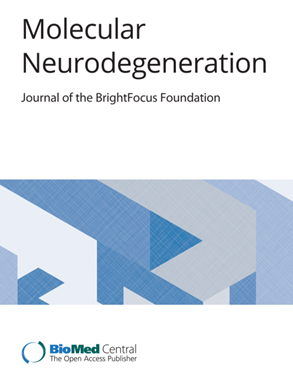Fate-mapping and functional dissection reveal perilous influence of type I interferon signaling in mouse brain aging
IF 14.9
1区 医学
Q1 NEUROSCIENCES
引用次数: 0
Abstract
Aging significantly elevates the risk of developing neurodegenerative diseases. Neuroinflammation is a universal hallmark of neurodegeneration as well as normal brain aging. Which branches of age-related neuroinflammation, and how they precondition the brain toward pathological progression, remain ill-understood. The presence of elevated type I interferon (IFN-I) has been documented in the aged brain, but its role in promoting degenerative processes, such as the loss of neurons in vulnerable regions, has not been studied in depth. To comprehend the scope of IFN-I activity in the aging brain, we surveyed IFN-I-responsive reporter mice at multiple ages. We also examined 5- and 24-month-old mice harboring selective ablation of Ifnar1 in microglia to observe the effects of manipulating this pathway during the aging process using bulk RNA sequencing and histological parameters. We detected age-dependent IFN-I signal escalation in multiple brain cell types from various regions, especially in microglia. Selective ablation of Ifnar1 from microglia in aged mice significantly reduced overall brain IFN-I signature, dampened microglial reactivity, lessened neuronal loss, restored expression of key neuronal genes and pathways, and diminished the accumulation of lipofuscin, a core hallmark of cellular aging in the brain. Overall, our study demonstrates pervasive IFN-I activity during normal mouse brain aging and reveals a pathogenic, pro-degenerative role played by microglial IFN-I signaling in perpetuating neuroinflammation, neuronal dysfunction, and molecular aggregation. These findings extend the understanding of a principal axis of age-related inflammation in the brain, one likely shared with multiple neurological disorders, and provide a rationale to modulate aberrant immune activation to mitigate neurodegenerative process at all stages.命运图谱和功能解剖揭示了 I 型干扰素信号在小鼠大脑衰老过程中的危险影响
衰老会大大增加罹患神经退行性疾病的风险。神经炎症是神经退行性疾病和正常脑衰老的共同特征。与衰老相关的神经炎症有哪些分支,以及它们如何为大脑病理发展提供先决条件,目前仍不清楚。老化大脑中存在升高的 I 型干扰素(IFN-I)已被记录在案,但其在促进退化过程(如脆弱区域神经元的丧失)中的作用尚未得到深入研究。为了了解 IFN-I 在衰老大脑中的活动范围,我们调查了多个年龄段的 IFN-I 反应小鼠。我们还研究了 5 个月大和 24 个月大的小鼠,这些小鼠的小胶质细胞中含有选择性消融的 Ifnar1,我们利用大量 RNA 测序和组织学参数观察了在衰老过程中操纵这一通路的影响。我们在不同区域的多种脑细胞类型中检测到了年龄依赖性 IFN-I 信号升级,尤其是在小胶质细胞中。在老龄小鼠中选择性地消减小胶质细胞中的 Ifnar1 能显著降低大脑 IFN-I 信号的整体特征,抑制小胶质细胞的反应性,减少神经元的损失,恢复关键神经元基因和通路的表达,并减少脂褐质的积累,而脂褐质是大脑中细胞衰老的核心标志。总之,我们的研究证明了正常小鼠大脑衰老过程中普遍存在的 IFN-I 活性,并揭示了小胶质细胞 IFN-I 信号在维持神经炎症、神经元功能障碍和分子聚集方面所扮演的致病性、促退行性角色。这些发现拓展了人们对大脑中与年龄相关的炎症主轴的认识,该主轴可能与多种神经系统疾病共享,并为调节异常免疫激活以缓解神经退行性过程的各个阶段提供了理论依据。
本文章由计算机程序翻译,如有差异,请以英文原文为准。
求助全文
约1分钟内获得全文
求助全文
来源期刊

Molecular Neurodegeneration
医学-神经科学
CiteScore
23.00
自引率
4.60%
发文量
78
审稿时长
6-12 weeks
期刊介绍:
Molecular Neurodegeneration, an open-access, peer-reviewed journal, comprehensively covers neurodegeneration research at the molecular and cellular levels.
Neurodegenerative diseases, such as Alzheimer's, Parkinson's, Huntington's, and prion diseases, fall under its purview. These disorders, often linked to advanced aging and characterized by varying degrees of dementia, pose a significant public health concern with the growing aging population. Recent strides in understanding the molecular and cellular mechanisms of these neurodegenerative disorders offer valuable insights into their pathogenesis.
 求助内容:
求助内容: 应助结果提醒方式:
应助结果提醒方式:


